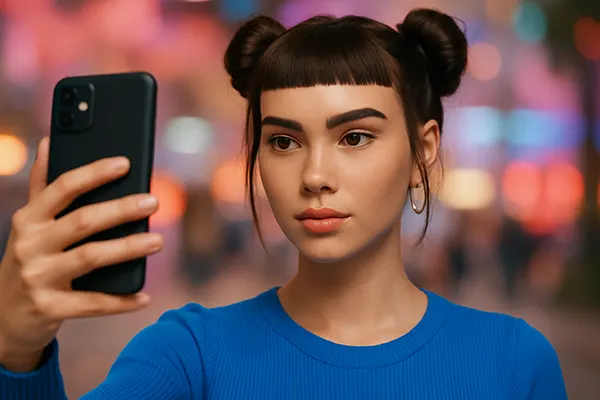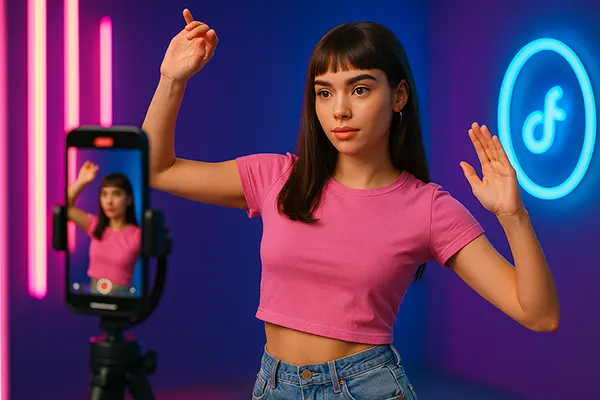
In 2025, artificial intelligence has firmly established itself not only in business, healthcare, and education, but also in the global influencer economy. On platforms like Instagram and TikTok, where trends are born and spread at lightning speed, AI-generated influencers are now active participants in marketing strategies, redefining the value of attention and reshaping user engagement. No longer a novelty, these digital characters command millions of followers and generate revenue comparable to human celebrities. But who creates them, and what does their rise tell us about the future of media and culture?
What Are AI Influencers and Why Are They Popular?
AI influencers are fully computer-generated personas designed to interact with users, share content, and even form fictional narratives about their lives. Powered by machine learning algorithms, they appear in realistic photos and videos, often supported by human creative teams managing scripts and content calendars. These digital characters are not bound by physical limitations, allowing for hyper-consistent branding, 24/7 availability, and risk-free publicity.
Instagram and TikTok are fertile ground for such innovation. These platforms reward consistency, visual appeal, and engagement — all areas where AI excels. Virtual influencers like Lil Miquela, Imma, or Noonoouri have gained millions of followers, landed real-world brand deals, and sparked conversations about identity, ethics, and authenticity in online spaces. Brands are increasingly drawn to AI personas for their control and adaptability, especially in Gen Z and Gen Alpha-focused campaigns.
The global influencer marketing industry was worth over $21 billion in 2023 and continues to grow. Within this expanding ecosystem, AI influencers are carving a niche that challenges traditional celebrity models. Their rise marks a shift toward digital storytelling where fiction and reality blur, and attention becomes a carefully engineered product.
The Technology Behind AI Influencers
The creation of an AI influencer involves multiple technologies: generative adversarial networks (GANs) for image generation, natural language processing for captions and interaction, and deep learning for style consistency. Teams of designers, marketers, and engineers collaborate to build and maintain the persona’s voice, aesthetic, and growth strategy.
Tools like Midjourney, DALL·E, or Runway ML help craft photorealistic visuals, while chatbots powered by large language models like GPT-4 or Claude ensure believable text communication. This process is not entirely autonomous — human oversight remains critical, particularly for audience targeting, brand alignment, and crisis management.
Despite their synthetic nature, these influencers can trigger real emotional responses in followers. This interplay between technical execution and psychological engagement is what sets them apart in the current landscape of content saturation and fleeting attention spans.
Impact on Consumer Behaviour and Marketing
AI influencers challenge the assumption that human connection is essential for brand loyalty. By designing characters that appeal to specific demographics, brands can test multiple campaigns with precision and less reputational risk. Influencer fatigue — a growing issue with oversaturated human creators — is also mitigated, as AI personas remain consistent and unaffected by scandals or personal controversies.
On TikTok, short-form videos featuring AI models performing dances, reacting to trends, or reviewing products receive high engagement. On Instagram, curated photo grids and Stories are used to simulate real lifestyles. These tactics influence purchasing decisions, particularly among younger audiences who often value digital aesthetics over authenticity.
Moreover, AI influencers offer insights into consumer psychology. Every engagement metric — from likes to comment sentiment — can be fed back into algorithmic training models, creating a feedback loop of hyper-optimised content. For marketers, this level of control is unprecedented and offers competitive advantages in forecasting trends and fine-tuning brand voice.
Ethical and Legal Considerations
As AI influencers blur the line between fiction and reality, ethical concerns have gained prominence. Transparency is a major issue: many users are unaware they’re interacting with a non-human persona. In response, some jurisdictions have proposed labelling requirements or disclaimers to ensure informed engagement.
Another concern lies in intellectual property. Who owns the image of an AI influencer — the team that created it or the model-generating software? Legal frameworks have yet to catch up, especially regarding copyright, performance rights, and AI-generated likenesses used for commercial gain.
Beyond legality, cultural representation poses challenges. AI personas can unintentionally reinforce stereotypes or appropriate identities without real lived experiences. Ensuring ethical representation requires human oversight and diverse input from creators, sociologists, and rights advocates.

The Future of Influencer Culture in a Synthetic Era
With the ongoing refinement of generative AI, the gap between synthetic and real influencers will continue to narrow. Hyper-real avatars with motion capture and voice synthesis are already capable of livestreaming or attending virtual events. This evolution invites deeper integration into metaverse environments and augmented reality platforms.
At the same time, human influencers are beginning to adopt AI themselves — creating digital doubles, delegating content creation, or enhancing their posts with generative tools. The boundary between creator and creation is no longer clear-cut, which opens the door to hybrid models of influence blending automation with human storytelling.
Regulation, transparency, and user education will play defining roles. Social media companies may need to enforce clearer policies on synthetic content. Audiences, too, will become more critical in discerning authenticity. As AI becomes more pervasive in online spaces, trust will be less about identity and more about value, consistency, and intent.
Conclusion: Not Just a Trend, But a Transformation
AI influencers are not a passing fad; they signal a paradigm shift in how influence is created, distributed, and consumed. For marketers, they represent a new toolkit to navigate the evolving digital economy. For users, they offer fresh ways to experience content — filtered not through human imperfection, but algorithmic precision.
This synthetic attention economy redefines what it means to connect, inspire, and sell in the age of information overload. In 2025 and beyond, success in digital marketing may depend less on who you are and more on how effectively your narrative — human or artificial — captures and holds attention.
Understanding this shift is not just about staying relevant. It’s about participating in the co-creation of the next chapter of online culture — one where code, creativity, and connection converge in unexpected ways.
